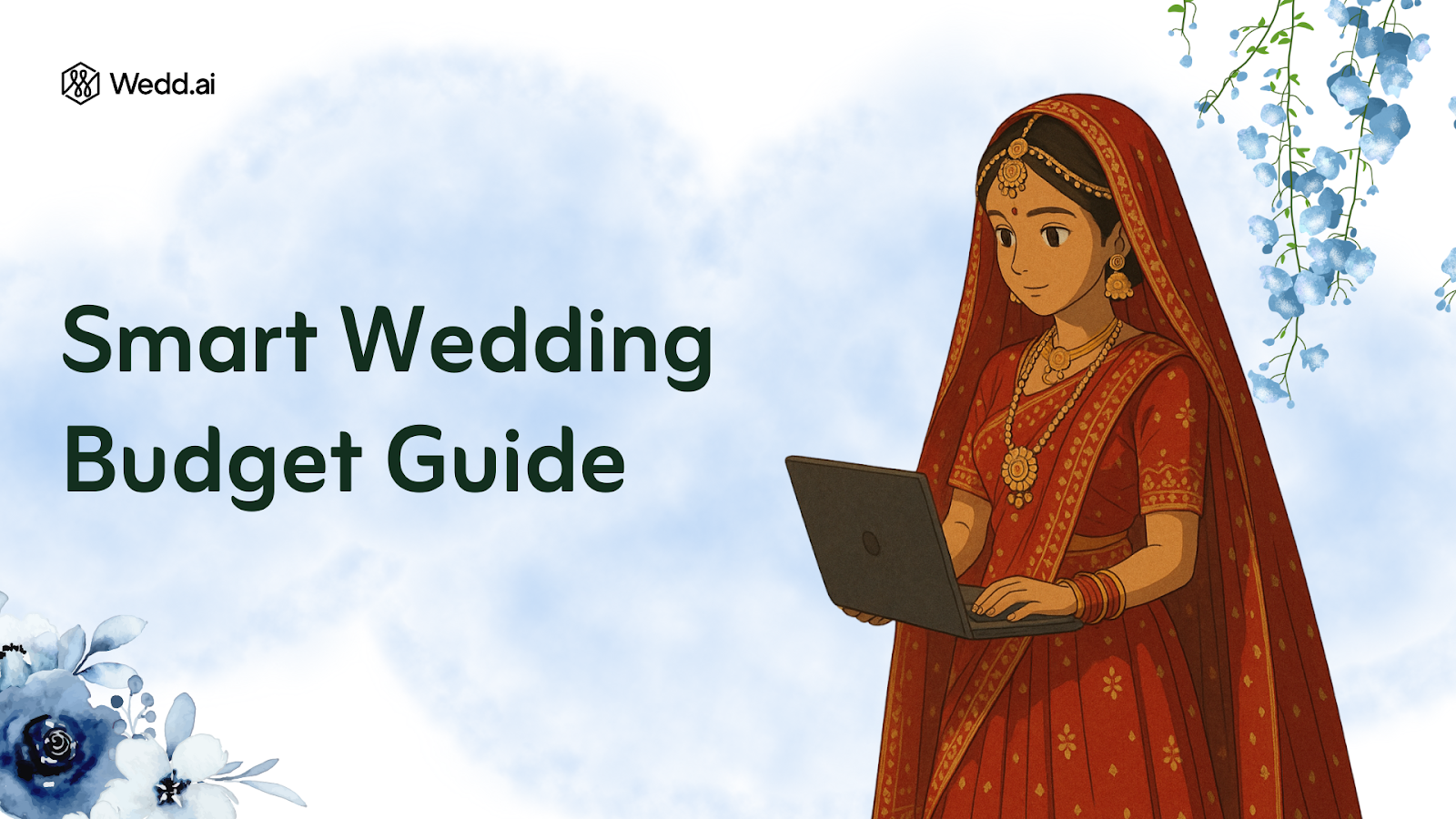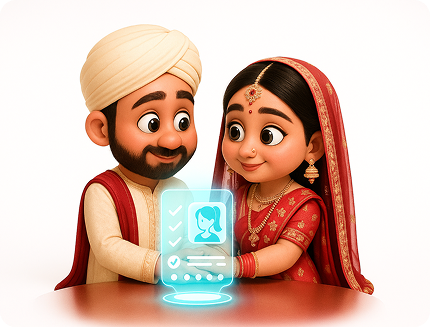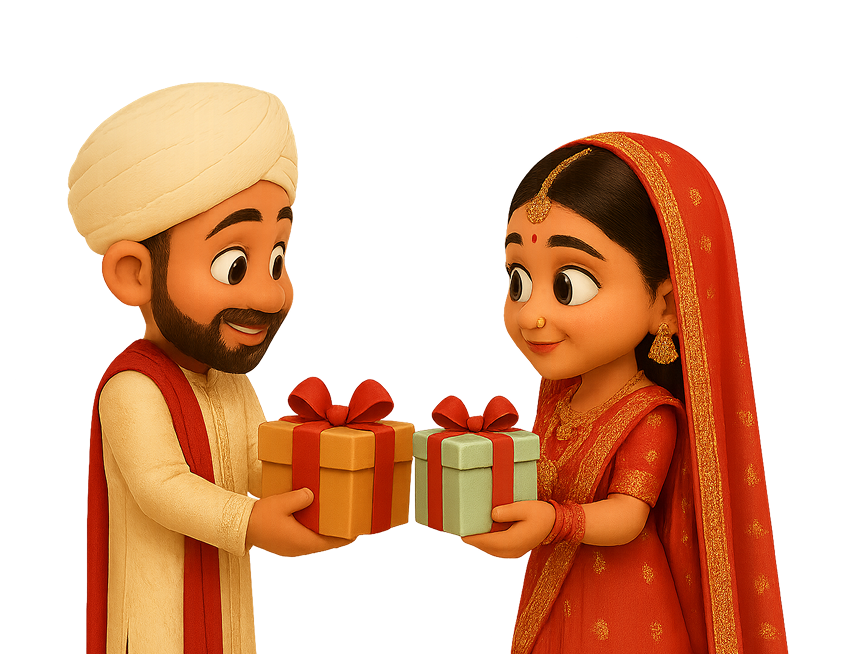If you’ve ever planned an Indian wedding, you know it’s not just about booking vendors and picking colors. It’s about juggling a never-ending list of requests, Mama insists on a live band, Bua wants AC on the lawn (even in December!), and the bride? She’s dreaming of a perfectly curated ceremony, but the budget? It’s disappearing faster than the last plate of chaats at the sangeet.
Indian weddings are more like grand productions than simple events. Every relative has a say, and every paisa is debated like it’s a big family decision. And who’s running the show? You.
Between last-minute changes, emotional meltdowns, and budget balancing acts, things can spin out fast. But don’t worry, there’s a way to stay sane. This guide walks you through managing your wedding like a budget event planner—smart, stylish, and fully in control.
How to Start Planning Your Wedding Budget the Right Way
Money talks, especially when it’s your big day. Before booking the band or picking the lehenga, get your wedding vision and budget sorted like a pro.
a) Finalize Your Wedding Look and Feel
Your wedding vibe decides the spend. Royal palace or a sunset beach affair? South Indian temple vibes or cocktail glam? Every detail; venue, outfits, food, gets shaped by this. So stop and ask:
What wedding style should I go for?
- Traditional Ceremony: Full rituals, cultural outfits, and classic decor
- Modern Minimal: Clean design, soft colors, and a smaller guest list
- Outdoor Celebration: Garden, beach, or backyard with natural light and open spaces
- Big Fat Celebration: Grand venue, designer wear, live entertainment, and a packed dance floor
- Destination Wedding: Exotic location, curated guest experience, and bundled stay-meal-event packages
Why it matters: A grand ballroom needs a bigger chunk of your budget than your backyard mandap. As a budget event planner, this vision lock is your first win.
b) Create Your Mood Board
Now that you’ve decided the vibe, it’s time to make it visual. To create a mood board, start by gathering images that match your wedding vibe. Use Pinterest or Canva to collect inspiration; think decor, colours, outfits, and even makeup styles. Organize them in a way that shows your theme clearly. Share it with your partner and family for feedback. Simple, yet effective!
c) Talk Budget With All Stakeholders (Peacefully)
This is your first big reality check. Sit down with your partner and both families, ideally in one room or over one long video call. You’re not just discussing money; you’re setting the tone for the entire wedding journey.
Start with two numbers:
1. The “dream” budget: What would it cost if money wasn’t a constraint?
2. The “real” budget: What’s the comfortable, doable amount both sides are happy to contribute?
Here’s what to align on, clearly and calmly:
- Total budget cap: Is it ₹5L, ₹20L, ₹40L? Fix it before shopping starts.
- Contribution split: Are both families splitting 50:50? Or handling different categories (venue, catering, gifts)?
- Non-negotiables: For some, it's food. For others, it's photography or rituals. Lock in 3–5 “must-haves.”
- Flex fund: Keep at least 10% aside for last-minute changes or upgrades.
Avoid vague promises like “Papa manage kar lenge” or “We’ll see closer to the date.” That’s how chaos walks in.
d) Find Wedding Dates or a Planner
Once your vision and budget are set, it’s time to find the perfect wedding dates. Check for auspicious muhurats, consult your families, and get the dates locked in. Alternatively, consider hiring a wedding planner to help bring your vision to life.
Want to avoid last-minute drama? This simple checklist will make sure nothing slips through the cracks.
Budget Breakdown: Paisa Kahaan Jaata Hai?
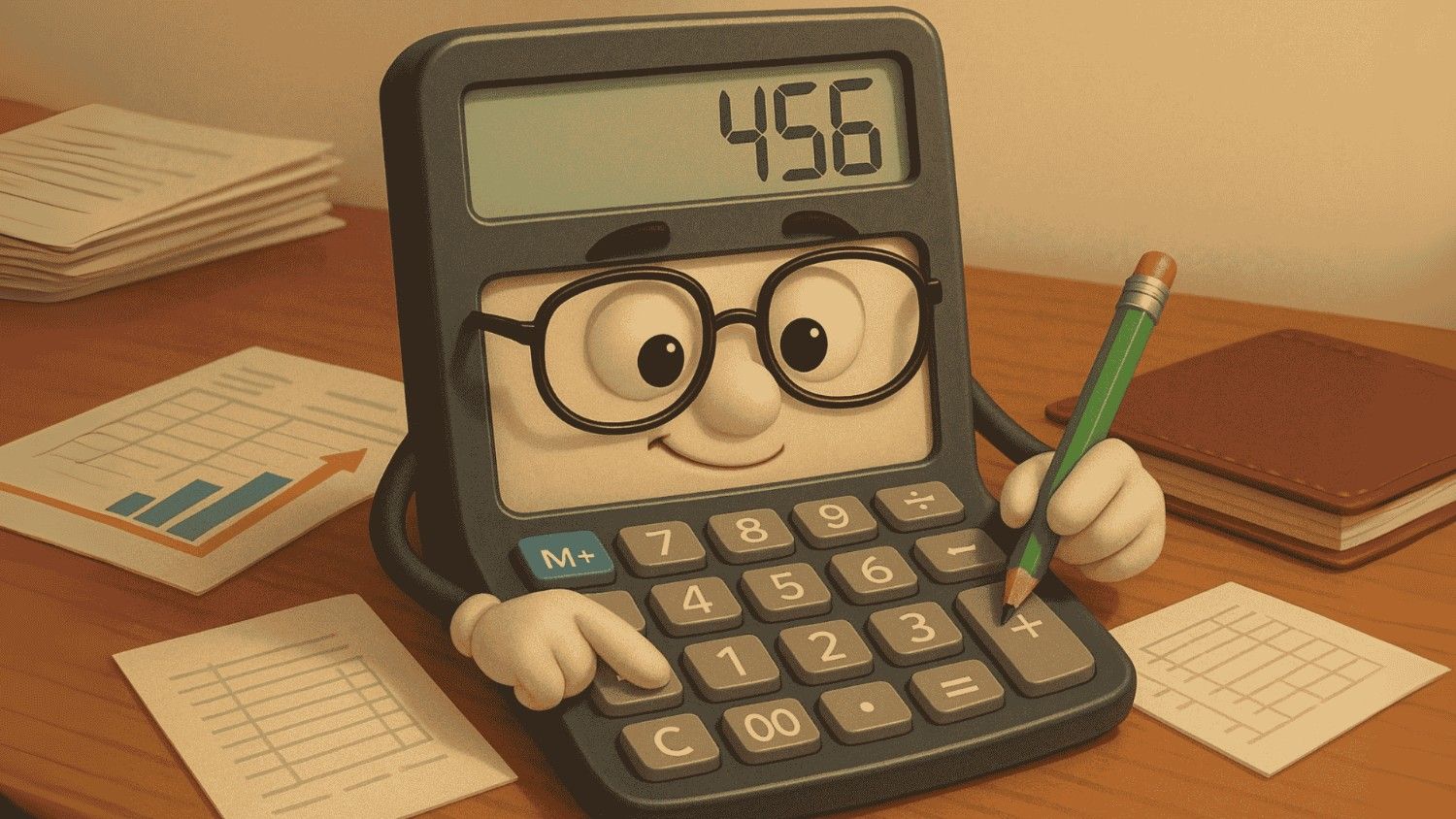
When you start reviewing your wedding budget, it's common to feel like you’ve missed something. One moment you're on track, and the next, you're wondering, “Where did ₹4 lakh go?” Weddings have a way of turning small expenses into big surprises. Let’s break down where most of your money goes and how you can control costs before they spiral.
a) Venue & Stay
The venue is often the largest chunk of the budget, and its cost can easily surprise you. A venue might quote a base price, but when you factor in extras like stage setup, lighting, sound, and additional tables, the total can quickly rise. If you're planning for outstation guests, remember to account for their rooms, transport, and meals. For destination weddings, the logistics can be as expensive as the décor itself.
Smart Fix:
- Always ask for everything in writing. Confirm the costs for chairs, lighting, AC, cleaning staff, and any additional services.
- Look for venues that offer bundled services, like catering, accommodation, and décor. This often leads to better deals and less hassle.
- If you’re flexible, consider a weekday wedding, venue costs can be significantly lower compared to weekends.
With Wedd.AI’s budget planning service, you can track every penny, streamline spending, and stay on top of your finances as you plan your dream wedding. Start planning now: Wedd.AI Budget Template!
b) Catering
Food is a significant part of any wedding budget. It’s easy to overestimate how many guests will attend, leading to food wastage. If you order food for 300 people but only 180 show up on time, you're left with a lot of leftovers and wasted money. Additionally, catering costs range anywhere from ₹700 to ₹2500 per plate, depending on the menu and location.
Smart Fix:
- Lock in your RSVPs with a hard deadline, and follow up with those relatives who are always late to confirm.
- Simplify the menu: Stick to 1-2 main courses, a dessert, and a live counter for variety.
- For late-night snacks, keep them light and local, like kulhad chai or vada pav, items that are easy to prepare, loved by all, and cost-effective.
c) Clothes & Jewellery
Bridal wear and jewelry are one of the most emotional parts of the wedding but can also be one of the most expensive. Designer lehengas can easily cost ₹2.5 lakh or more, and while beautiful, they’re often worn only once. Grooms also have their own set of costs, with custom sherwanis, juttis, saafas, and pagdi rentals adding up.
Smart Fix:
- Consider renting or borrowing bridal wear and jewelry. You can still look stunning without the hefty price tag.
- Shop off-season to find better deals on outfits, as prices tend to rise during peak wedding months.
- Choose jewelry that you can wear again. A mix of designer pieces for the wedding and simpler accessories for other functions can save you a lot.
d) Décor
Décor is another area where costs can spiral out of control. What you envision as a simple setup may end up costing lakhs, especially if you're going for imported flowers, LED light tunnels, and custom signage. It’s easy to get caught up in the idea of making everything grand, but remember, simple can also be beautiful and impactful.
Smart Fix:
- Pick one event to go all out on décor. For other functions, keep things simpler with good lighting and statement backdrops.
- Avoid "per piece" pricing; negotiate a lump sum for the décor to keep things within budget.
- Opt for local flowers, fabric drapes, and DIY elements like photo booths that can make a big impact without draining your budget.
e) Entertainment
Entertainment can quickly escalate when you start adding on performers. A DJ, dhol team, LED dance floor, and host all come with hefty price tags. Full-day artists can cost anywhere from ₹20,000 to ₹2 lakh, and you still have to pay for their equipment, travel, and accommodations.
Smart Fix:
- Keep the vibe alive with less expensive entertainment options. Have cousins or friends host the night, and add some fun games, impromptu dances, or a nostalgic slideshow to keep the crowd engaged.
- Stick to one or two major acts, whether it’s a DJ or a folk artist, and build the entertainment around that. Remember, guests will remember the energy, not the number of performances.
f) Photography & Media
Pre-wedding shoots with props, drones, and a scenic location sound great, but once the wedding is over, you might wonder if all that money was worth it. Full photo-video packages can cost between ₹80,000 to ₹2.5 lakh, with additional costs for things like reels, teaser videos, and drone shots. The final wedding album often ends up with a lot of footage that no one will ever watch again.
Smart Fix:
- Book a local photographer with solid reviews, and make sure to clearly outline deliverables upfront, such as how many photos, edited videos, and reels you expect.
- Prioritize your essentials: candid shots, a short video, and digital files for sharing with loved ones. Keep it simple and focus on capturing the moments that matter.
Wedd.AI’s AI Gallery feature organizes all your wedding photos seamlessly. Say goodbye to blurry WhatsApp photos and endless scrolling. With AI Face Recognition, find every picture you're in with a scan and share instantly through QR codes; easy, fast, and high-quality!
Hidden Expenses That Sting Later

You're feeling good. Budget made. Vendors booked. But shaadi budgets are like golgappas, one more always sneaks in. Here’s where most people get caught off guard:
a) Taxes and service charges
Vendors often share prices that sound reasonable, but once GST and service charges are added, your bill balloons. A venue quoted at ₹1,50,000 could end up costing ₹1,90,000 with just these two add-ons. Many planners forget to ask for the final, all-inclusive amount during negotiations.
A key detail to note: The GST applicable to hotel catering services is different from that of external caterers. Hotels usually charge a higher GST rate (18%) for in-house catering, whereas external caterers might charge a lower rate (5%). Before locking anything in, double-check: “Is this the final amount with taxes?” If they say no, ask for a breakdown, either by email or WhatsApp. Written proof is your budget’s best friend.
b) Charges for extra hours
Weddings always run late. Whether it’s the baraat dancing longer or pheras starting behind schedule, you end up using more hours than booked. Venues, caterers, photographers, they all have overtime rates. And no, they won’t quietly absorb it. If your decorator has to dismantle late at night, they’ll charge extra labour too.
To avoid surprises, clarify hourly charges upfront. Better still, build a 1-hour buffer into your timeline. This way, you get breathing room, not a surprise bill when you’re trying to enjoy your big day.
c) Generator and diesel costs
For outdoor or farmhouse events, the main electricity supply isn’t always reliable. That’s why backup generators are essential. Many people assume the cost of the generator is included in the venue package, but here’s the important detail: the cost of diesel usually isn’t.
For example, if your sangeet runs for five hours with lighting, music, fans, and food setups, you could easily use 10 to 20 litres of diesel. That’s an extra ₹5,000 to ₹8,000. Some venues quietly add this amount to your final bill without informing you in advance.
To avoid surprises, ask the venue directly: “Who will pay for the diesel?” If it’s your responsibility, make sure to include it in your budget. Power cuts might be rare, but when they happen, the extra cost isn’t.
d) Staff tips and extra helpers
Valets, waiters, guards, housekeeping, they keep things running smoothly, and most families choose to thank them. It’s not a ‘must’, but it is a shaadi norm. The catch? You only remember it on the last day, and then someone’s scrambling for change.
Plan for this upfront: around ₹200–₹300 per person. For 10–15 people, that’s ₹3K–₹5K minimum. It adds up quickly but feels manageable if planned early. Keep envelopes ready. It's a small gesture, but one that ends your event on a respectful note.
e) Card reprints and last-minute delivery
It happens more often than you’d think, someone’s name gets misspelt, an address changes, or pados wali aunty suddenly needs a printed card. That means reprints. And if you're in a rush, delivery charges climb too. Printers often ask for 20–30 cards minimum, even if you need just two. That’s wasted money and time.
Best fix? Triple-check names and addresses before sending for print. And always order 10–15 blank extras. They’ll save you stress, and help you handle last-minute guest additions like a pro.
Budget Hacks Only Smart Indian Planners Use
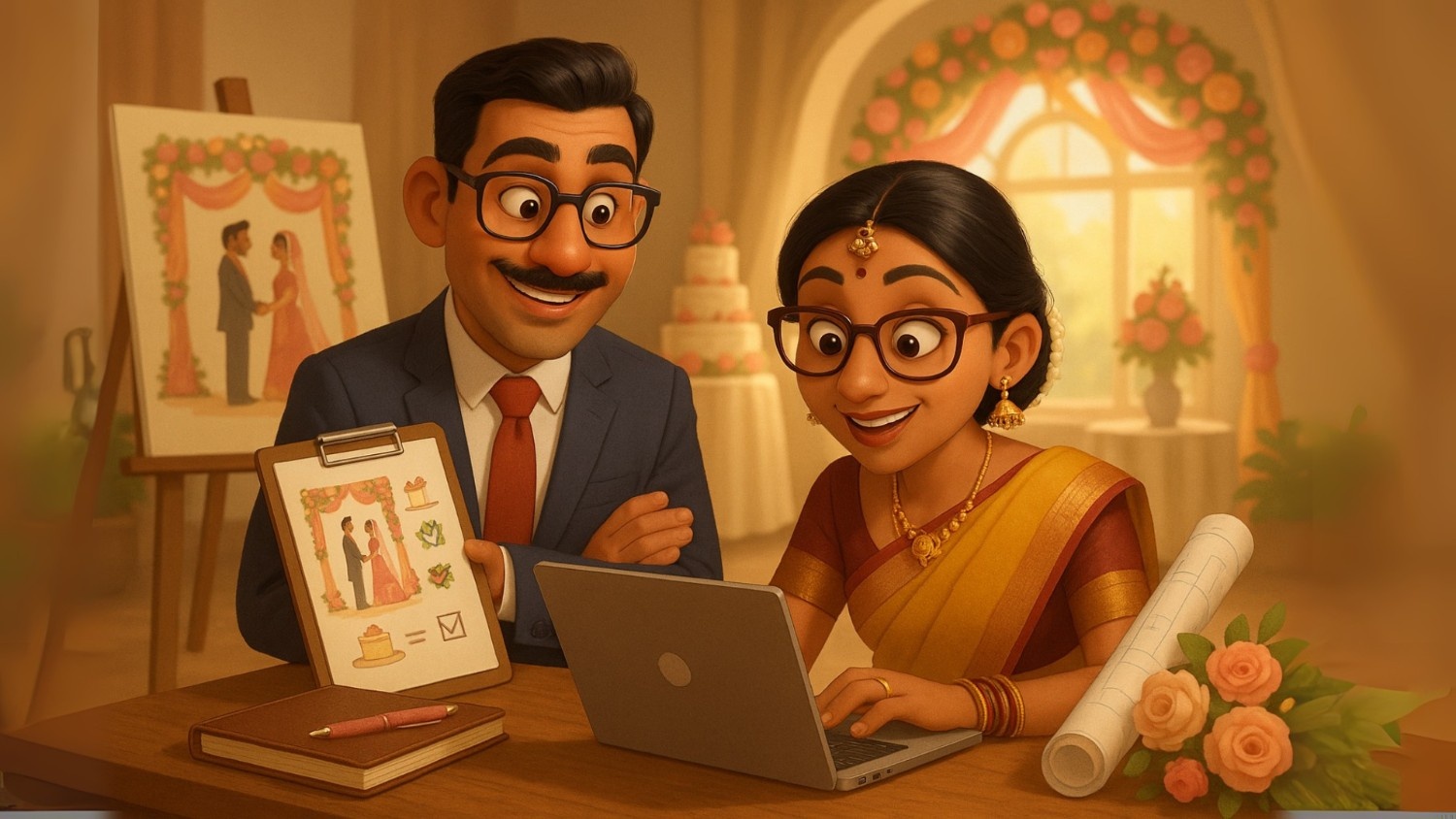
You don’t need a bigger budget. You just need better moves. These are real hacks Indian planners swear by to save lakhs without cutting corners or style.
a) Book Off-Season Dates
Save up to ₹6 lakh by shifting the wedding to non-peak months like February, March, or even June (AC cost is still cheaper than a December booking!). Vendors charge premium rates during “muhurat” season, plus, venues get booked months in advance. But if you're flexible with your dates, you’ll get:
- Venue discounts (30–40% lower)
- More attention from decorators
- Less date clashes with other weddings
b) Rent Your Wedding Look
You don’t need a ₹2 lakh lehenga to look like a queen. Rentals from Chandni Chowk or platforms like Flyrobe, Stage3, or local boutiques give you designer looks at 90% less.
Here's why it's a win:
- You’ll wear it once anyway
- You get dry-cleaned, tailored pieces
- No stress of storing or reselling later
- Pair it with some real jewellery or custom accessories and nobody will know, except your wallet (which will thank you).
c) Put One Cousin in Charge of RSVPs
Asking 5 people to collect RSVP replies is a recipe for chaos. Appoint one cousin or friend as the RSVP-in-charge, having a Maid of Honour or Best Man, though irrelevant to our culture, will definitely help. Why it works:
- Everyone knows who to contact
- You avoid duplicate entries
- No more “Arre woh toh mummy ne confirm kiya tha” confusion
Set a deadline too. Something like: “15th Jan tak bata do warna no seat, no food!” Works every time.
For more tips, check out Best Online RSVP Tools for Wedding Planning.
d) Book Vendors Early + Ask for Combo Packages
When you book your DJ, decorator, caterer and sound person together, you unlock combo discounts. Vendors often have working relationships, so they bundle services at lower prices when booked together. You also avoid last-minute friction because the team knows how to work together.
Extra tip: Morning/day weddings cost less than evening ones, food is lighter, decor can use natural light, and guests leave on time (less buffet wastage!).
e) Reuse Decor Across Events
That gorgeous floral Haldi backdrop? Reuse it as a photobooth at the cocktail. Your wedding mandap flowers? Flip them into your reception entry arch. Why it works:
- Decorators can repurpose the setup with small tweaks
- You save on labour, flowers, logistics
- Guests don’t notice (or mind), they're busy clicking pictures!
- Just let your decorator know in advance so the design is versatile and transport-friendly.
f) Befriend the Venue Manager
They run the show behind the scenes. From lighting and air-conditioning to guest entry, vendor setup, and staff coordination, nothing moves without their nod. If you’re on good terms, they can be your biggest ally when things go off-script.
Here’s what being friendly can get you:
- Early access to decorate or set up
- Free extras like a spare sofa or an additional AC
- Quiet help with crowd control (even that loud baraat next door)
Start with basic courtesy, use their name, treat them with respect, maybe tip them in advance. A little goodwill can unlock a lot of on-the-day flexibility.
Emotional Budgeting: When Feelings Mess With Finances
Shaadi is about love, family, and big feelings. But sometimes, those feelings quietly blow up your budget. You want everyone to feel happy and included. You don’t want judgement or taanas from relatives. So you end up spending where you shouldn’t.
This is what emotional spending looks like:
- Booking a 5-star room for that one bua who never asked
- Adding a chocolate fountain “because ladke wale had it”
- Giving extra return gifts so no one feels “less”
- Calling 2 more photographers just to match someone else’s wedding
You don’t even realize how these small moves pile up. One minute you’re under budget, the next you’re explaining EMI plans over honeymoon coffee.
“Ladke wale kya kahenge?” shouldn’t decide your budget. What helps? Sit with your parents or partner and decide what really matters. Keep a 10% buffer for last-minute emotional spends, not everything needs to be practical, but everything should be planned.
Your wedding is your story, not a society competition. Spend with heart, but use your head too.
Earn from Your Own Shaadi? Yes, It’s Possible.
Today’s smart couples are flipping the game. With a little planning and the right contacts, your wedding can actually earn you ₹50K to ₹2L, all while keeping the fun and emotion intact.
Here’s how they’re doing it:
- Branded Gift Bags: Include sponsored goodies from skincare, mithai, or jewelry brands. They'll pay to be part of your special day.
- Paid Instagram Reels: Collaborate with wedding planners or lehenga designers for reel shoutouts.
- Affiliate Links: Recommend your decorator, mehendi artist, or DJ on YouTube or your wedding website and earn from every booking.
- Family Lawn Mehendi: Host an intimate pre-function at home, film fun content, and save on venue cost.
- Discount Code Collabs: Feature vendors on your blog with custom promo codes for readers.
- Behind-the-Scenes Content: Post your prep journey online, brands love authentic wedding moments and will pay to be tagged.
You’re already spending lakhs, so it only makes sense to recover a part of it smartly.
Shaadi Stress Free, Sapne Pure
A big-fat Indian wedding doesn’t need to be a big-broke one. Budgeting isn’t about saying no to your dreams, it’s about saying yes to the smart version of them. From mehendi to vidai, money flows fast. But when you track it well, plan ahead, and cut the chaos, you can actually enjoy your own wedding.
Phoolon ki baarish ho sakti hai aur bank ka balance bhi safe reh sakta hai, it’s all about balance. Let Wedd.AI be your planner, accountant, and yaar, all in one. From setting budgets to syncing payments and tracking every little detail, Wedd.AI ensures your wedding stays dreamy and drama-free.
To take your planning up a notch, use the Wedding Planning and Budgeting Template, your perfect tool to manage expenses and timelines effortlessly.
One app. Zero stress. Total control. Try it before shaadi season hits!

